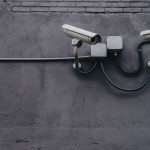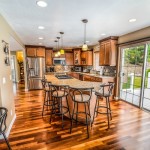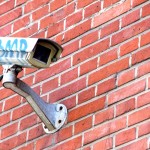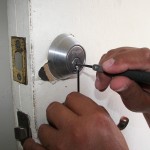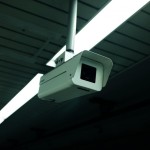Night Vision Cameras Vs. Thermal Cameras: Which Is Better For You?
When it comes to securing the perimeter of your home or business, you want a surveillance system that can perform in various conditions. For 24-hour monitoring, night vision cameras have been the popular solution. However, the emergence of thermal cameras has provided a more advanced solution. Learn more about the different types of night vision cameras and how thermal cameras differ from them.
Low-Light Cameras
These are also known as day and night cameras and electronically and automatically adjust lighting capture settings based on the time of day to produce optimal video images. During the day, IR cut filters are used to “cut out” IR illumination, allowing for color images. At night, the filter is removed entirely to allow the maximum amount of visible and IR light to reach the sensor and produce a monochrome image. The downside to these cameras is that they are completely dependent on lighting conditions. That is, too much light or no light at all will result in unusable images. Thus, the amount of visible light available drastically affects the image.
IR Cameras
IR cameras have a lens that is surrounded by LEDs which emit a beam of near-infrared energy to bounce off objects in its field of view. The image sensor is then able to create a picture; however, distance plays a crucial role in performance. Because the reflected IR light can only reach so far, these cameras are often limited to short-range applications.
Night Vision Cameras
Night vision goggles (NVG) and cameras capture visible light photons. As the photons penetrate a photocathode tube (which acts as an image intensifier), they are converted to amplified electrons that pass through a phosphorous screen and converts them back to visible light to create a picture (often in a greenish hue). Because these devices need just the right amount of visible light to function, they are virtually useless when there is ample light outside (ex. twilight) or in conditions where light is blocked (ex. smoke) or no light is available.
Thermal Cameras
Rather than performing based on light availability, these cameras produce video surveillance images based on the measurement of the electromagnetic heat radiation emitted by all objects and individuals. Their performance is unaffected by bright lights, complete darkness, foliage, and light fog. No matter how small, differences in heat are picked up and produce images with high contrast, which are essential to the success of video analytics and intrusion detection. These cameras may be better suited for properties which require strict perimeter security (ex. oil and gas industries, data centers, mines, power stations), and are often combined with other layers of protection (ex. fence sensors, microwaves, PTZ cameras).
Thermal cameras also boast long-range detection capabilities, thus, reducing the number of cameras needed. They can also be a good substitute for fences where fence installation is not possible. For example, ports and oil refineries have acres of water and land to secure and monitor. Thermal imaging and video analytics can create “virtual fence” and can be a more feasible and affordable solution than installing a physical barrier.
Do you use night vision cameras or thermal cameras to protect your property? Share with us on Facebook, Google+, Twitter, LinkedIn, and Pinterest.
If you need help deciding which night vision or other security cameras will best suit your surveillance needs, please feel free to contact us at 888-203-6294 or visit SecurityCamExpert.com today!
Expensive Security System Mistakes
Sometimes you end up paying more than you should when it comes to home security systems. Whether it is from lack of research or sheer convenience, there are ways to effectively invest in your home security without breaking the bank. Review these common home security mistakes to ensure you are getting the most for your money.
• Mistake: Your first option was your only option.
Don’t just go with the first company you find -do your research. Check out both local and national companies to compare rates and get free quotes when possible. This step will help you discover who truly values your security versus those looking for a big sale.
• Mistake: You didn’t consider lifestyle changes.
Aside from thinking about your current needs, you should also consider your future plans. For example, if you’re planning on growing your family, you may want more surveillance in the nursery. Or, if you’re single, you may relocate a few times before settling in to a spot, so you may want to inquire about cancellation or relocation services.
• Mistake: You’re overlapping cameras.
While the idea of having multiple angles on entryways and high traffic areas sounds safer, it could be unnecessary. Focus more on getting the best angles with the least amount of cameras. This will save you money on equipment and could make it easier to manage your system.
• Mistake: You didn’t talk about discounts.
When it comes to discounts, it doesn’t hurt to ask. You could be missing out on special deals and offers, such as a Veteran or senior citizen discount, or you may even be able to work out a payment plan rather than paying it all up front.
• Mistake: You haven’t updated your insurance.
No matter what kind of equipment you choose, be sure to let your home insurance provider know. These systems may add value to your home, and could possibly save you some cash on your monthly payment. But before committing to system, you should check with your provider.
• Mistake: You have more than you need.
In relation to the overlapping cameras, you may have opted for the most comprehensive system when you really could do with a simple set up. Evaluate your needs, such as how many entry points you wish to monitor, and you can tailor your system accordingly. Remember that when it comes to security cameras, choose quality over quantity.
If you’ve made any of these mistakes, you can still make them right. If you need help, please feel free to call us at 888-203-6294. We can help with surveillance equipment, site surveys, and security camera installation. Visit SecurityCamExpert.com to browse our selection and connect with us on Facebook, Google+, Twitter, LinkedIn, and Pinterest.
Why You Need IP Security Cameras
Security camera systems have made great advances over the years. From traditional analog CCTV technology to IP networking, security camera quality and features have improved to provide better monitoring and security. Some of these enhanced benefits include higher resolutions resulting in clearer images, fewer cameras covering larger areas, and thus, a lower total cost of ownership. Many businesses and homeowners are opting to trade up to network IP security cameras, network video recorders (NVRs) and cloud-based storage for more convenient and affordable security.
Network IP Cameras & Assisted Living Communities
Aside from protecting homes and company headquarters, assisted living communities can also reap the benefits of installing network IP security cameras.
In the way that security cameras deter burglars from targeting your property, in assisted living facilities, the aim is to deter abuse and neglect. By strategically placing these cameras in and around the facility, family members can put their worries at ease by reviewing stored footage to ensure that no mistreatment is taking place and that the staff is providing the proper care. For facility managers, video surveillance footage can provide evidence should an employee or resident be charged with abusive behavior.
Network IP cameras can also help the staff keep a closer eye on residents or patients. For those residents at risk for falls, staff can potentially prevent falls and injuries, or respond faster to those incidents. Medical equipment such as oxygen tubes may get dislodged, and staff can get to the rooms faster to fix the problems. In the case of memory units, the entrances and exits can be closely monitored to prevent residents from wandering outside of supervised areas, and can help protect the facility from possible intruders.
These security cameras can also prevent employee theft. Although we would rather think that this is uncommon, it is not unheard of for residents to report their belongings stolen. Whether these claims are accurate or not, cameras provide evidence to prove what really happened. Also, facilities often find that supplies may go missing. To counter these losses, IP cameras can document the incident or prevent it from occurring in the first place.
Of course, opponents of these security measures stand firm in their belief that it makes it more difficult to recruit staff and that employees will have trouble making sound decisions for fear of families challenging their actions. The problem with this stance is that numerous other careers and industries are under constant surveillance with little to no issues arising. Proponents of employee surveillance believe these measures will help workers to make better decisions and avoid any questionable situations.
Why Should You Upgrade To IP Security Cameras?
As stated, upgrading to IP security cameras comes with a myriad of enhanced benefits. Aside from the obvious video quality improvement, IP cameras are able to utilize your existing CAT5 or CAT6 Ethernet cabling, saving time and money on installation. The intelligent video features include facial recognition, motion detection, audio detection and people-counting, to name a few. Also, because they are connected to the Internet, owners are able to remotely view live video, search archived footage, and receive alerts via any PC, tablet, or smart phone.
Choosing the Right IP Security Camera
Because the various IP camera choices on the market, it can be a bit overwhelming. Here are some important features you should know about before choosing the best IP cameras for your needs.
- Camera Types
There are three design options for IP cameras: bullet, dome and PTZ (Pan, Tilt, Zoom). As inferred by their name, bullet cameras resemble a bullet shaped and best suited for directional monitoring. They typically do not possess the capability to zoom in or move. Dome cameras are shaped like domes and ambiguously monitor areas, aiding in its role of deterring misconduct. “Speed domes” spin quickly to capture a broader range of images. Lastly, PTZ cameras are ideal for covering large areas. These cameras can move and capture different angles, thus, delivering the work of several fixed-point cameras in one single device. PTZ surveillance cameras may also be preprogrammed to scan an area or may be controlled remotely.
- Resolution
IP camera resolution is the amount of visual data that can be captured and is measured in megapixels. It is often provided in horizontal and vertical pixel dimensions (ex. A camera that has 1280 x 1024 resolution is 1.3MP because 1280 x 1024 = 1,310,720 or 1.3MP). A higher resolution means the camera can capture more data, resulting in improved video clarity.
- Power over Ethernet (PoE)
This allows you to transmit power over the data cable, which can run up to 100 feet. This will save you money and decrease installation limitations. In addition, the PoE standard 802.3af supports higher power ratings needed for motorized cameras (ex. PTZ).
- Wide Dynamic Range
If you are monitoring an area that has challenging lighting conditions, you will want a camera that has good wide dynamic range (WDR). This will control the backlight and remove shadows to produce adequate footage in difficult environments.
- IR LED
Infrared (IR) LED lighting is like night vision, allowing cameras to capture clear footage in low to no light conditions. IP cameras can see infrared light and when wavelengths reflect back, it is as if the room is illuminated and the camera can record video. Night vision capabilities improve with more IRLEDs and longer ranges.
- Weather/Vandal Resistance
If you are using your surveillance cameras outdoors, be sure to choose weatherproof and “vandal resistant” cameras, which will often be IP66 rated and IK10 rated respectively. This will safeguard against water or dirt, which can interfere with your recordings or damage your equipment. Some cameras even offer thermostatic controls, which will help to prevent condensation forming over the lens.
When upgrading to IP cameras within your home, business, or in assisted living communities, be sure to evaluate your needs and review your options before making a final decision. If you need assistance, please feel free to call us at 888-203-6294 to speak with a representative and request a free quote. You may also visit SecurityCamExpert.com to browse our inventory of network IP cameras and surveillance equipment.
Connect with us on Facebook, Google+, Twitter, LinkedIn, and Pinterest for the latest news and updates!
Indoor Security Tips
Security cameras placed outdoors allow you to monitor your property while acting as a deterrent for trespassing. But what happens if criminals proceed anyways?
Indoor security cameras will show you what happens when the intruders get in. Should theft or damage occur, you are left with video evidence of the crimes to assist in capturing the criminals.
For everyday use, indoor security cameras help to monitor daily activities, such as kids returning home from school, or checking in on pets while you’re at work.
While there are several benefits of indoor cameras, it may be difficult discerning the most effective places to install them. Here are some helpful tips for choosing the best locations for your indoor security cameras.
Statistics show that the most common entry points for burglars are through first-floor doors or windows, thus, your main entrances should be your top priorities. The front door, back door, garage door, and other first-floor exterior doors and windows should be equipped with some type of security (ex. locks). If possible, installing security cameras to cover all of these spots would be ideal.
- One of the most common places for an indoor security camera is in a high traffic area that provides coverage for as many areas as possible. Try to find the right angle and placement for a camera that will give a bird’s eye view of the larger area. For example, the family room may have views of the kitchen, back door, garage door entrance, and possibly even the front door.
- For larger homes or homes with a second or third story, additional security cameras may be necessary to sufficiently cover the interior of the home. Expansive one story homes may need multiple cameras to cover different rooms and entrances, while multiple story homes may need more cameras to cover each level.
- If an extensive security camera system does not fit within your budget, choose key areas that are highly targeted by burglars and install cameras there. For example, the family room often houses expensive televisions and electronics. Or if you have a family safe, you can place a camera in that room for added security.
- Once you have chosen the locations for your cameras, be sure to install them out of reach. Not only will this help to get a better view, but it will also help to prevent any damage of theft. If your security cameras are easily accessible, burglars may destroy them to eliminate evidence, or possibly steal them.
Share your indoor security camera tips with us on Facebook, Google+, Twitter, LinkedIn, and Pinterest today!
For a great selection on indoor security cameras and more, visit SecurityCamExpert.com. For more information on site surveys and our installation services, please call 888-203-6294.
Safeguard Your Security Cameras
These days, most of our devices are connected thanks to the Internet of Things. While this can make things more convenient for us, it can also leave us vulnerable to hackers.
There have been many public stories about cyber attacks and spying, from hacked baby monitors to internet outages. And while we may never see an end to cyber criminals, this proves that we can never be too cautious.
These unfortunate hacks can occur from unsecure Wi-Fi connections, open devices (no passwords), or malware attacks. Luckily, there are ways to combat attacks and minimize our risks.
Heed these cyber security tips that may apply to security cameras, webcams, as well as baby and pet monitors.
- Keep Your Internet Private
Employ a full-service security suite for your internet and keep it up to date. Use a strong, unique password and encryption to protect your network.
- Create Secure Passwords
Always change the default password that comes with your wireless networks and any of your devices. When choosing a password, remember to incorporate numbers, capital letters, and, when allowed, multiple punctuation marks. You should also try to use 12 digits, and avoid names, places, or anything that can easily be guessed. To ensure you’ve created strong and secure passwords, use a password checker.
- Keep Software Up-To-Date
As stated previously, keep all your devices and software updated as these help to patch any known or found vulnerabilities that allow hackers to gain access. Although this simple step can easily be overlooked, it is important to stay on top of these updates.
- Cover Cameras When They Are Not In Use
If your camera indicator light goes on without your permission, you can assume that your computer has been compromised. However, just because the light is off, you cannot assume that your camera is safe. Researchers have found that hackers can infiltrate and turn on webcams without activating the indicator light.
To err on the side of caution, keep your cameras covered. There are different types of patches, stickers, devices, and other products on the market that you can use. However, for an immediate fix, masking tape will suffice.
- Don’t Click That Suspicious Link!
If there is any uncertainty, do not click the link. Only download attachments or click on links from people you know and trust. If you were not expecting a message or attachment from a trusted person, be sure to check with them before opening or downloading anything.
- Avoid Using Unsecured Wi-Fi
Public Wi-Fi networks are prone to hackers so avoid them when you can.
- Check Your Camera Log
If your security system permits (most do), check the IP addresses that have accessed your cameras. If you find any suspicious IP addresses on your log, be sure to change your access codes right away and notify your security company.
- Manage Cameras Settings
Network connected security cameras allow you to remotely monitor your cameras via an app or a website. If you do not need this feature, turn it off.
- Consider A Separate Network
It may be beneficial to have one network for your phone and computers and another network solely dedicated to your security systems and other monitors.
Being an educated consumer will minimize your risk of becoming a victim. These security precautions promote safe use of personal technology and can go a long way for your cyber security. Connect with us on Facebook, Google+, Twitter, LinkedIn, and Pinterest to share your own cyber security tips.
Need quality security cameras and CCTV surveillance equipment? Look no further than SecurityCamExpert.com! Call 888-203-6294 to schedule a free* site survey, request a quote, or inquire about our installation services.
Take Your Security Seriously
Protecting our families, homes, and valuables is a top priority. Home and business security systems aim to give you peace of mind when it comes to intruders, however, not all properties are created equal. A security system tailored to your specific needs is a smarter option. Aside from consulting with Security Cam Experts, you should also take note of these statistics and security tips.
Statistics
- According to the FBI, in 2014, there were 1,729,806 burglaries in the United States.
- Of those burglaries, 73.2% were residential burglaries.
- Of these residential burglaries, nearly 28% occurred during the day while over half happened at night.
- Top targets include women living alone or wealthy senior citizens.
- Burglars also choose targets by the type of car you drive, what neighborhood you live in, the size of the home, or signs that a home is unoccupied.
Prevention Tips
- Never open your door to strangers or solicitors. Remember that delivery persons need not step into your home to make a delivery.
- Never rely on a chain-latch as a barrier to partially open the door. With enough force, it can easily be broken.
- If you don’t have one already, install a peephole and always use it to see who is at your door before opening it.
- Lock all doors, windows, and garages at all times. This helps to prevent unwanted intruders from simply walking through an unlocked entrance.
- Choose heavy duty locks and use four three-inch screws to secure heavy duty lock strike plates in the door frames.
- See something, say something. If you notice any suspicious stranger activity, call the police.
- Have a family meeting in regards to home security plans so that everyone is on the same page.
Having something to protect you is better than nothing, which is why even a simple dummy camera can make a difference. But if you can afford it, investing in surveillance systems and home alarm systems can be a great benefit and put some of your worries at ease. If you have any questions or want to shop a wide variety of affordable security cameras and equipment, please call 888-203-6294 or visit SecurityCamExpert.com today!
You can also connect with us on Facebook, Google+, Twitter, LinkedIn, and Pinterest.
Dummy Cameras
If you’re looking for a very inexpensive way to protect your home or business, dummy security cameras could be a smart solution for you. While the costs are low, the effectiveness of dummy cameras can be limited in certain situations. So are dummy CCTV cameras worth the investment?
Studies have shown that security cameras can deter property crime. More often than not, criminals will be discouraged if there is a higher chance of getting caught, thus, will move on to an easier target. With that being said, the security camera does not have to be real, however, it should closely mimic one to get the real effect.
Before you purchase a dummy camera, you should know what features to look for and which to avoid.
You will want a dummy camera that looks real close up and from far away. They should replicate existing security cameras and include a visible data cable and power outlet.
Red LED bulbs are often placed on dummy cameras to draw attention and show that they are recording. However, real cameras are designed to be inconspicuous and only have a hidden green light on the back to let owners and technicians that the camera is active.
In addition to red LED lights, you should also avoid dummy cameras that have an automatic motor which allows the camera to pan side to side. Real security cameras are usually motion activated and only track movement when it is detected.
Advantages
The cost-benefits ratio of a dummy security camera is its main selling point. Their price is minor in comparison to the cost of security cameras, monitoring stations, plus wiring and installation fees.
You also don’t need a technician to install these, nor the added equipment and man power to manage and store recordings. You will also save on maintenance costs as it is not necessary with dummy cameras.
Disadvantages
On the other hand, should the burglar choose to target you regardless of the faux camera, you will have no footage to submit to local authorities in hopes of identifying the subject. Also, those who know about the fake system (ex. neighbors, former employees) may leak the information rendering your system useless.
If you are in the market for a dummy camera or an affordable CCTV surveillance system, browse our stock online at SecurityCamExpert.com! Request a site survey, get a free quote, or inquire about our installation services by calling us at 888-203-6294.
You can also connect with us on Facebook, Google+, Twitter, LinkedIn, and Pinterest!
Video Surveillance Troubleshooting
Problems that may arise with security camera systems are sometimes related to powering issues or even factory defects. However, more often than not, these problems are usually attributed to improper cabling and connections, which boils down to the installation.
Prior to security camera system installation, technicians must be mindful of the features, functions, and especially the limitations of the actual hardware. While all installations are different, an understanding of the specific system and the customer’s expectation is crucial for a quality job.
Here are some common installation problems you may come across along with helpful trouble shooting tips.
Rolling Lines On The Screen
Whether they are white or multi-colored, these rolling lines or ghosting over the camera’s video are often caused by video cables that run close to high-voltage power sources.
To prevent this, cameras should be tested at another location prior to installation in order to eliminate any hardware defects as a cause to any future issues. Also, keep wires away from sources that supply high-voltage electrical charges at any point of the run. Improperly grounded electrical circuits can also cause video disturbances, which is why high quality camera cables are crucial.
Infrared Glare/”White Out”
The most common causes of IR glare are reflective surfaces and large, lightly colored areas. “White out” (unrecognizable white silhouettes on screen) is often caused by objects that are too close to the camera. Also, if you install infrared security cameras under eaves, the beams of the IR LEDs may hit parts of the structure and bounce back, causing the reflection to blind the camera.
To combat these potential problems, install your cameras in areas clear of any objects that may cause glare or obstruct the camera’s view. Also, be sure that the user keeps these areas clear (at least three feet). You should also test daytime and low-light conditions before completing installation. Cameras with “Smart IRs” that have dynamic IR strengths can help to alleviate these problems as well and ensure high-quality night time images.
IR Cameras Unable To See In The Dark
In order to employ IR cameras properly, a surface is necessary for the IP light beams to bounce off. For example, when you point a flashlight into the night sky it remains dark because there is nothing allowing the light beams to bounce back.
Choose cameras that have sufficient IR distance capabilities. During installation, point the cameras at an angle facing a surface (ex. ground, wall) and test them under low-light conditions before proceeding.
Extreme Glare During Daylight
If your property has lots of glass doors and windows, you may have an issue with extreme glare. Glare from the sun does not mix well with security cameras, which means a special alternative is necessary.
In these situations, you want to invest in cameras with mechanical Wide Dynamic Range (WDR). These are designed to prevail in extreme lighting conditions. While “digital WDR” does it exist and can be helpful in these situations, it does not work as well as true, mechanical WDR.
Insufficient Power Causing Cameras To Drop Out
Without the proper power source, security cameras will not perform properly, causing them to drop out or lose power. While spec sheets may specify the camera’s power needs, they may not factor in the added power necessary for IR/low-light applications. For example, the system may work fine during the day, but drop out at night when the IR kicks in.
It is advised that you use a power supply which supports twice the voltage requirements of all your cameras combined.
When it comes to power, distance may play a role as well. Voltage drops can occur due to poor quality cables and long distances. To avoid this issue, AC voltage is recommended for runs greater than 250ft.
Inadequate Coverage
With great features and functions come limitations as well. For maximum coverage of your property, first map out your installation to identify areas that need surveillance. Based on the locations, you can determine which specific features you need for certain areas. For example, focal lengths and angles of view should be considered (longer lenses for closer view, shorter lenses for wide-angle shots). In general, license plate cameras should be installed no more than five feet from vehicles and valuable points of interest (such as cash registers, entrances and exits) should have a camera dedicated solely to monitoring that area.
Have you come across any issues not mentioned here? How did you resolve it? Share your stories and advice with us on Facebook, Google+, Twitter, LinkedIn, and Pinterest.
Choose SecurityCamExpert.com for quality security cameras along with professional installation and support services. Visit us online or call 888-203-6294 to learn more!
Common Security Camera Mistakes
When it comes to security, you want to deter intruders from targeting your property. Investing in advanced security and surveillance cameras with the latest technologies can be a smart approach, however, in order to be effective, they must be installed properly. Here are a few common mistakes to avoid when installing a security camera system on your property.
Mistake #1 – Hiding Your Cameras
The presence of security cameras can deter bad behavior, so why would you hide them? Making them visible from the street, yet out of reach, is a good idea. Keeping the cameras out of reach is important to prevent any tampering or vandalism that could compromise their performance. Burglars are always on the hunt for an easy target, and homes or businesses with security cameras create an extra obstacle.
Mistake #2 – Camera Positioning
The important places to monitor are rather obvious, but you must also take intermittent lighting and weather conditions into consideration. Things like direct sunlight can wash out your recordings, while rain or snow can build up on the lens, and windy days can make branches and leaves a problem. All of these can interfere with your recordings and possibly make your footage useless.
The best way to avoid these issues is to employ proper housing to protect and shade your cameras. Keep an eye on your feed to ensure that various weather conditions are not interrupting your surveillance.
Furthermore, if you’re using IP cameras, it is crucial that each camera location has strong and consistent Wi-Fi signal. Weak or spotty connection will impede your camera system’s performance.
Mistake #3 – Cheap Systems
Unfortunately, not all security cameras are equal. While there are many inexpensive cameras and systems that may seem appealing (especially to your wallet), you will likely run into performance issues. When shopping for security cameras, be sure to pay attention to features and specifications. Look into user feedback and reviews to ensure you are making a sound investment.
Mistake #4 – Passwords
With anything security related, we can’t stress enough how important strong passwords are. And always, always, ALWAYS change the default password. If someone gains unauthorized access to your surveillance feed, they can study the layout of your system and your daily routines, mapping out the best time to attack.
If you have an internet-connected system, it likely offers remote monitoring, thus you need a password to access it. Again, change your default password as soon as possible, and choose a strong, complex, and long password that you can remember.
Mistake #5 – DIY Installation
While it may seem more practical to set things up on your own, it might be better to leave it to the professionals. You don’t want to risk ruining your equipment because you installed it improperly. Trustworthy companies usually offer warranties, and will come back to fix any issues should they arise.
Do you have any other advice to add? Share with us on Facebook, Google+, Twitter, LinkedIn, and Pinterest.
For a great selection of quality security cameras & CCTV surveillance packages, visit SecurityCamExpert.com. For more information about our products and installation services, please call 1-888-203-6294.
Ethics & Laws Of Home Surveillance
When you decide to install home security cameras, where you place your cameras and how you use your footage is important to consider. For maximum protection, it is recommended to monitor common areas as well as possible points of entrance. While home surveillance is not banned, there are a few things to keep in mind to avoid breaking the law.
Home Surveillance Concerns
Within your home, you do have the right to record without informing others, but there are very large exceptions to this rule. First, any area where a “reasonable expectation of privacy” is assumed is off limits. For example, if your home security cameras are monitoring your front yard and possibly the sidewalk and street, your expectation of privacy in these areas is low. On the other hand, bathrooms and bedrooms, where you may be in a state of undress, have a high expectation of privacy, and, thus, are prohibited.
Second, if your cameras enable audio recording, you may want to brush up on wiretapping laws. While these vary slightly from state to state, federal statutes allow audio recording so long as one of the two parties consents. This basically means that you, as the recorder, may know and give consent without informing the other party. However, some states, including California, require dual consent, meaning both parties must be aware and agree to be recorded.
In regards to recording burglars, any trespassers forfeit any expectation of privacy in your home. You may record the person, submit the footage to police, and use your video in court.
For cameras that run non-stop and record audio, you will want to warn any person that is allowed access to your home that these cameras are there and running, otherwise you may run the risk of breaking wiretapping laws. These people include family members, guests/visitors, delivery persons or installers.
The Consent Conundrum
You may now be wondering how you can lawfully gain dual consent. Will verbal consent or a surveillance sticker in the window suffice, or should you have every guest fill out a consent form upon entering? Unfortunately, consent for audio recordings must be given in written form. It is a common misconception that window decals or yard signs are sufficient means to gain consent, as it is expected for visitors to see and recognize them.
However, in a home setting, there may be an exception to the rule. With home cameras, it boils down to what you do, or intend to do, with your recordings. If you don’t do anything with the recording, it is likely that no one will know or care – no harm, no foul.
If you do something with the recording, things change. For example, say a celebrity is a guest in your home and now you have footage of this celebrity hanging out in your home. While selling this footage to a gossip magazine for profit may seem enticing, you will be breaking the law. First, consent was never given from this celebrity. Second, you cannot use a recording for commercial gain without the subject’s consent.
In regards to wiretapping, a possible solution is to simply turn off audio recording if your devices permit. However, why turn off a service that you have paid for? While thieves are usually fairly quiet while they work, using audio recording for eavesdropping may be beneficial (but puts forth yet another ethical dilemma).
Uses For Recordings
Let’s say you record someone in your home plotting a crime, or admitting to committing a crime. Most states allow you to use the recording to prevent a crime or prove that one was committed.
However, if the recording does not involve a crime and you decide to post it on YouTube or a social media site, you could be engaging in illegal activity. Using a recording for exploitive or commercial purposes (as in the previous celebrity example) may be misappropriation if not all parties consent. As a reminder, laws vary from state to state so please look into your own state’s laws.
Also, even within your own home, recording with the intention of blackmail is illegal.
Law enforcement has the right to ask for your home surveillance if they suspect illegal activity, and a warrant will likely be necessary. However, since most recordings are stored in the cloud, they may be able to go straight to the provider and obtain the footage, bypassing your permission to access.
What Should You Do?
To err on the side of caution, be sure that everyone entering your home is aware that the cameras are there, and avoid placing them in areas where privacy is expected. If you wish to withhold the information, so long as you do not do anything with the footage, you should be fine.
However, there are other reasons to be careful with the privacy of your security cameras. While you may not have the intention to do bad things, hackers may be able to access your cameras and broadcast your feed. To protect yourself and your guests, it is advised to take reasonable security precautions (ex. strong passwords, maintain security Wi-Fi network), and take the ethical high road when using new technology.
Have any other tips or experiences to share? Connect with us on Facebook, Google+, Twitter, LinkedIn, and Pinterest.
Choose from our quality security cameras and surveillance equipment to protect your home or business. Shop our stock online or call 1-888-203-6294 today!


